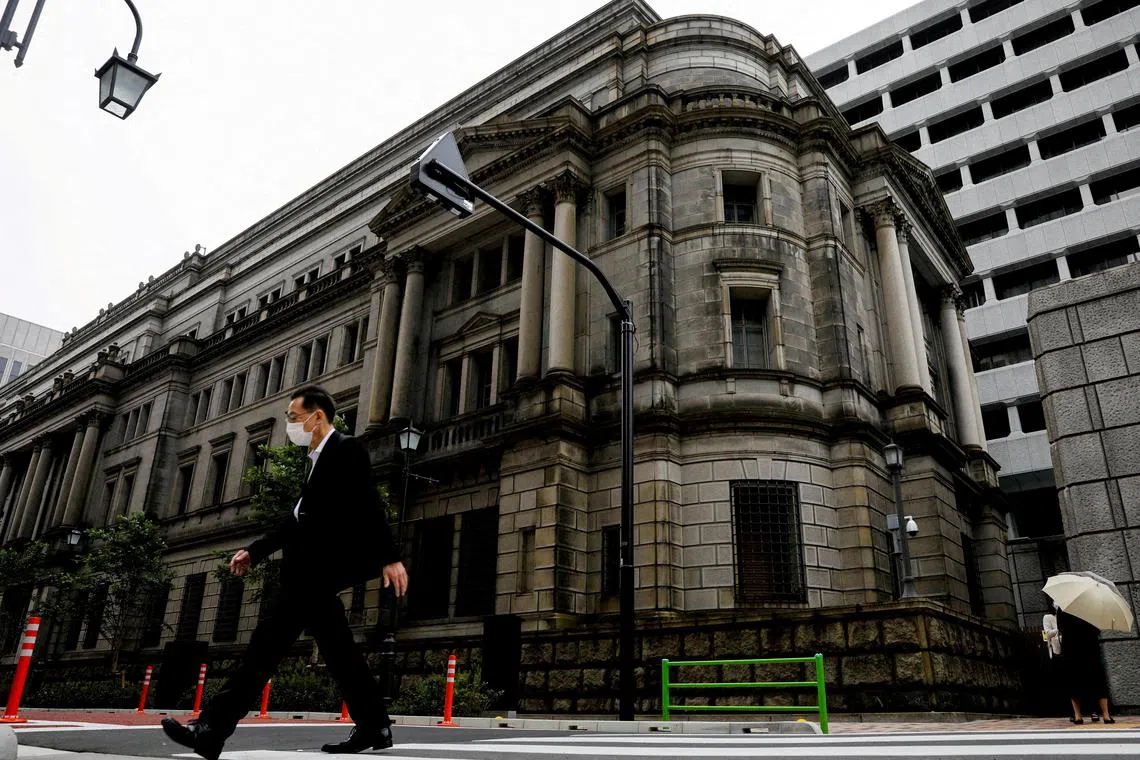All-male BOJ picks another blow for gender equality in Japan
Sign up now: Get ST's newsletters delivered to your inbox

No woman has held any of the top posts in the Bank of Japan's 140-year history.
PHOTO: REUTERS
Follow topic:
TOKYO – Once again, three men are set to lead the Bank of Japan (BOJ), underscoring the hurdles women face in reaching leadership positions in a country that ranks the lowest among advanced economies for gender equality.
Prime Minister Fumio Kishida is set to nominate academic economist Kazuo Ueda, 71, as BOJ governor on Tuesday. Mr Ryozo Himino and Mr Shinichi Uchida will be his deputies, officials with knowledge of the matter told Reuters.
No woman has held any of the top posts in the central bank’s 140-year history, though several were considered contenders for deputy roles this time.
“This is a problem that is not going to change easily,” said Ms Momoko Nojo, a prominent campaigner for gender equality in Japan. “The BOJ, even now, from the entry level it’s mainly men... There’s no diversity.”
The BOJ ranked 142nd out of 185 central banks on gender equality, according to a report in 2022 by the Official Monetary and Financial Institutions Forum. About 11 per cent of central banks surveyed had a female governor, a record high, while 37 per cent had female deputy governors.
Japan’s central bank has promised to improve its gender diversity. It pledged two years ago to raise the ratio of female managers from 6 per cent to 10 per cent by 2023 through career support and training. That target is far below the ratio at the European Central Bank, where women hold 30 per cent of management roles.
The BOJ did not immediately respond to queries about its efforts to promote women.
Its annual review in 2022 did not specify progress towards its gender diversity goal. But it said it had “proactively recruited women” in the fiscal year to March, with women accounting for more than 30 per cent of recruits on track for roles as directors, chief managers and positions above those.
Societal problem
The issue is far bigger than the central bank. Mr Kishida has just two women in his 20-person Cabinet.
The Cabinet Office said it does not have a specific plan to increase the number of women ministers.
However, it said it is working towards raising the number of women candidates in parliamentary elections to 35 per cent by the end of 2025.
The late former prime minister Shinzo Abe, a long-serving predecessor of Mr Kishida, had touted “womenomics”,
But his government delayed from 2020 to 2030 its target of boosting the proportion of women in leadership posts to 30 per cent.
Japan has had two women serving as foreign ministers, but none as prime minister or finance minister. Tokyo elected its first female mayor in 2016.
Women make up just 15 per cent of Japan’s senior public- and private-sector officials and managers, according to data collected by the International Labour Organisation.
Japan ranked 116th out of 146 countries on gender parity in the World Economic Forum’s global report in 2022. That was the lowest of any country on the International Monetary Fund’s list of advanced economies.
Some were pleasantly surprised that three women – think-tank head Yuri Okina, BOJ executive Tokiko Shimizu
“The fact that there had been a great deal of chatter about having women in the central bank’s leadership was actually refreshing,” said Ms Shihoko Goto, deputy director for the Asia Programme at the Wilson Centre, a United States-based think-tank.
Ms Goto said the BOJ and other top institutions needed to do more to nurture female leaders and stimulate a broader shift across private industry.
Having women in prominent roles of public interest would help tackle “persisting gender discriminations” in Japan, said University of Chicago sociology professor Kazuo Yamaguchi.
But Ms Nojo said the BOJ’s slated appointments are just another example of the slow pace of change in a conservative, patriarchal society. “It seems to happen like this every time,” she said. REUTERS

